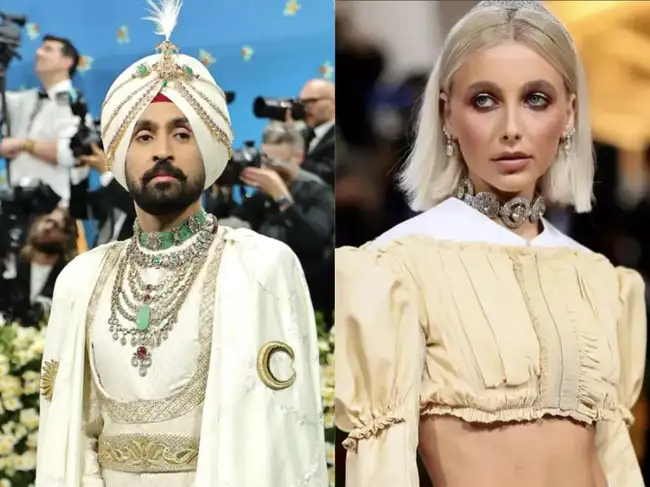Diljit Dosanjh’s Historic Met Gala Moment: Punjabi Pride, Royal Tribute, and a Cartier Controversy
Diljit Dosanjh’s appearance at the 2025 Met Gala captured headlines worldwide. The celebrated Punjabi singer didn’t just walk the iconic blue carpet—he made a global statement about heritage, fashion, and cultural legacy. This article takes a closer look at the story behind his showstopping outfit, the Patiala Necklace controversy, and what it all means for history and representation in modern pop culture.

Diljit Dosanjh’s Met Gala Debut: A Celebration of Punjabi Heritage
Diljit Dosanjh has long been a cultural ambassador for Punjabi music and style. At the 2025 Met Gala, he elevated his status even further. Dressed in a Prabal Gurung creation, complete with a traditional turban and a dramatic cape inscribed with Gurumukhi script, Dosanjh honored the legendary Maharaja of Patiala. His ensemble was more than fashion—it was a proud display of Punjabi identity on fashion’s biggest stage.
For more details about his striking look and the rich symbolism behind it, read the Hindustan Times' coverage of Diljit's Met Gala debut.
The Cartier Necklace Controversy
The centerpiece of Diljit Dosanjh’s planned ensemble was meant to be historic: the $2.5 billion Patiala Necklace. Once commissioned by Maharaja Bhupinder Singh of Patiala in 1928 and created by Cartier, this 1,000-carat masterpiece features nearly 3,000 diamonds and is steeped in both artistry and colonial intrigue.
However, Dosanjh was denied access to the iconic necklace. Cartier informed his team that the necklace was sealed away and not available for loan. Instead, a local Indian jeweler crafted a piece inspired by the original, allowing Dosanjh to honor his vision, even if he couldn’t wear the original.
Learn more about the remarkable history of the Patiala Necklace and why Diljit was refused access in The Economic Times' in-depth article.
Emma Chamberlain, Colonial Memory, and Double Standards
The Cartier refusal became controversial due to a sharp contrast: in 2022, American influencer Emma Chamberlain was allowed to wear part of the same Patiala Necklace at the Met Gala. This sparked discussion about cultural ownership, colonial legacy, and representation. While Cartier’s decision for Dosanjh was attributed to protocol, many saw it as an example of historical gatekeeping—where Western figures could access global treasures, but artists with ancestral ties could not.
The debate has stirred questions not just about fashion, but about who gets to narrate history through iconic objects. Dosanjh’s dignified response and his alternative tribute drew global support, bringing much-needed attention to these deeper issues of cultural narrative.
To explore more perspectives on this controversy and see how it made global headlines, visit the New York Times' coverage.
A Lasting Impact: Reclaiming Cultural Narratives
Diljit Dosanjh’s Met Gala moment went far beyond dazzling fashion. By honoring the Maharaja of Patiala and challenging luxury industry traditions, he ignited dialogue about history, identity, and reclaiming narratives. Even without the actual Patiala Necklace, his walk shone with the pride and resilience of Punjabi heritage.
Dosanjh continues to inspire fans worldwide—not only as a superstar but also as a powerful cultural voice unafraid to ask, “Who gets to wear history?”